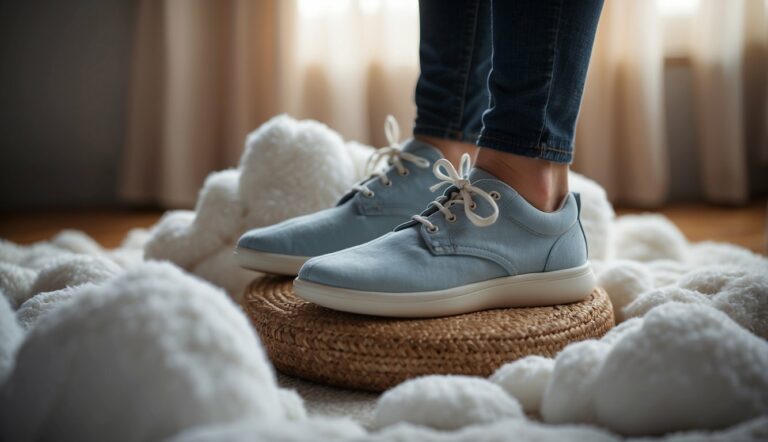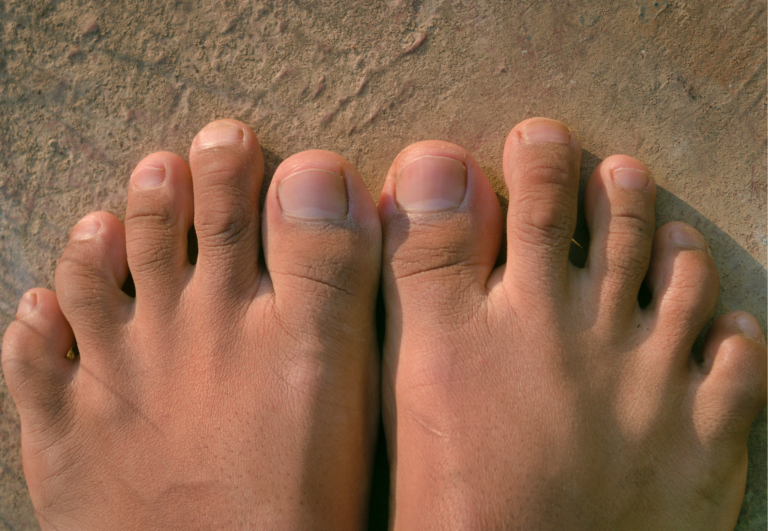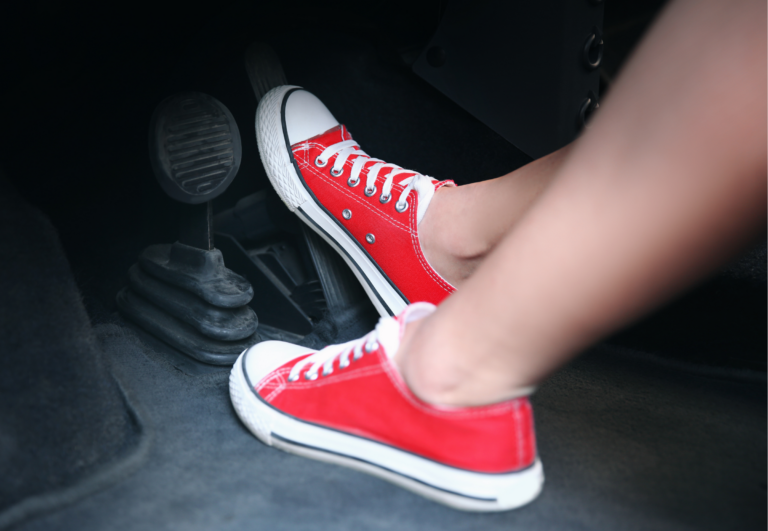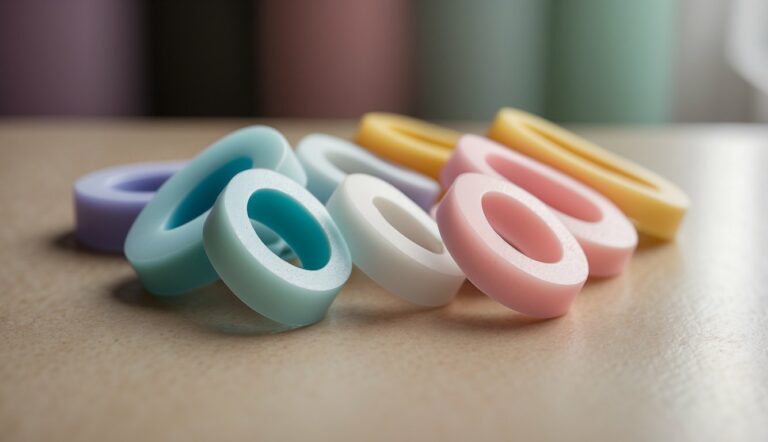How Toe Spacers Can Help with Foot Odor Issues: Unveiling the Benefits
Toe spacers often serve as a remedy for various foot-related concerns, and those suffering from foot odor may find them particularly beneficial. In my experience with these simple tools, they work by separating the toes, increasing air circulation around each digit. This enhanced airflow reduces moisture buildup, a primary cause of bacterial growth and subsequent foot odor.
By using toe spacers, individuals can also maintain better toe alignment, which in turn promotes a healthier foot environment. When feet are crowded in tight shoes all day, the lack of space can exacerbate issues like sweat and heat retention. Spacers help by preventing toes from overlapping and creating humid micro-environments that can foster odor.
How Toe Spacers Can Help with Foot Odor Issues
Toe spacers can indirectly help with foot odor issues by promoting a healthier environment for your feet.
Here’s how they can contribute:
- Improved Airflow Between Toes: By separating the toes, toe spacers increase the air circulation around each toe. Better airflow can help to keep the feet drier and reduce the damp conditions that bacteria and fungi, which are often the cause of foot odor, need to thrive.
- Reduced Moisture: Toe spacers can prevent the toes from overlapping, which is beneficial as moisture can accumulate in the tight spaces between toes. Keeping the toes apart helps to reduce this moisture buildup, thereby decreasing the potential for odor-causing bacteria to grow.
- Decreased Friction and Sweating: Friction between toes can lead to increased sweating, which contributes to foot odor. Toe spacers minimize this friction, which can help to keep the feet drier and reduce odor.
- Better Hygiene: Separated toes are easier to clean thoroughly, allowing for more effective washing between the toes. Good hygiene is crucial in combating foot odor.
- Prevention of Bacterial and Fungal Growth: By keeping the toes dry and reducing the chance of infections like athlete’s foot, toe spacers can help prevent conditions that often have associated odors.
It’s important to note that while toe spacers can help by creating a less favorable environment for odor-causing bacteria and fungi, they should be part of a broader foot care routine to address foot odor. This routine should include regular washing of the feet, wearing moisture-wicking socks, choosing breathable footwear, and maintaining good overall foot hygiene.
Using toe spacers responsibly and keeping them clean is also essential. They should be washed regularly to prevent them from becoming a source of odor themselves. If foot odor persists, it may be advisable to consult with a healthcare professional to rule out any underlying conditions or infections.
Foot Odor and Toe Spacers

Foot odor is often caused by the proliferation of bacteria on the skin of the feet that thrive in moist environments. Through my experience with toe spacers, I’ve found that they can play a role in combating foot odor.
Role of Toe Spacers:
- Improve Ventilation: Toe spacers can enhance air circulation around the toes.
- Reduce Moisture: By separating the toes, they help reduce the moisture buildup that bacteria need to grow.
- Promote Hygiene: When used in conjunction with good foot hygiene, they can contribute to a healthier foot environment.
Footwear Considerations:
- Material: Choosing breathable footwear assists in preventing odor.
- Fit: Well-fitting shoes reduce sweat accumulation, which can decrease bacterial growth.
Key Benefits:
| Benefit | Description |
|---|---|
| Bacteria Reduction | Toe spacers can reduce the conditions bacteria need to flourish. |
| Moisture Management | They help keep the toes dry, indirectly fighting odor. |
- Wear toe spacers regularly to help maintain proper toe alignment and ventilation.
- Combine usage with other foot care methods like using antibacterial foot soaps.
With consistent use, toe spacers may contribute to reducing foot odor by addressing some of the root causes. Remember, while I have extensive experience with toe spacers, it’s always good to consult a professional for personalized advice.
The Relationship Between Toe Spacers and Foot Health
Toe spacers are often overlooked for their role in foot health, yet they offer potential benefits for toe alignment and overall foot stability, contributing to a reduction in foot odor by allowing for better air circulation.
Anatomy and Biomechanics of the Foot
My experience has shown that a well-balanced foot relies heavily on the correct alignment of toes. Toes contribute to stability, balance, and posture when walking or standing. Altered gait or tight, cramped toes can lead to a reduction in foot strength and flexibility, causing a slew of foot-related health issues.
Common Foot Conditions and Alignment Issues
Foot conditions such as bunions, hammertoes, corns, flat feet, and overlapping toes can create discomfort and pain, leading to compromised foot strength. Conditions like plantar fasciitis and rheumatoid arthritis further stress the foot’s biomechanics. Diabetic individuals, in particular, need to be vigilant as they are more prone to foot-related complications.
Benefits of Toe Spacers for Foot Health
I’ve found that regular use of toe spacers can help realign toes, enhance circulation, and support the arch, which indirectly may alleviate some foot odor issues by improving overall foot health. Better alignment and spreading of toes promote improved balance, flexibility, and can sometimes relieve pain stemming from foot deformities.
- Improved circulation: Enhances blood flow and may reduce odor-causing bacteria.
- Realigns toes: Creating space between toes to prevent overlapping.
- Arch support: Helpful for individuals with flat feet to foster a better posture.
Additional Considerations for Foot Conditions
For those with existing foot injuries or conditions such as plantar fasciitis, toe spacers should be integrated carefully into their foot care regimen. It’s essential to monitor the comfort and health of your feet regularly, as changes may indicate the need for professional advice. Individuals with diabetes or rheumatoid arthritis must be particularly cautious, as their feet may require more specialized care.
Selecting the Right Toe Spacers
When combating foot odor, selecting the right toe spacers is crucial. Proper spacers can improve air circulation between toes, which is key to addressing the issue.
Materials and Types of Toe Spacers
The materials of toe spacers vary, including silicone, gel, and foam.
- Silicone: Durable and flexible, ideal for prolonged wear.
- Gel: Provides cushioning and conforms well to the toes.
- Foam: Lightweight and often more affordable but less durable.
Fit and Comfort Factors
The fit of toe spacers is important for comfort and effectiveness. They should fit snugly but not too tight, allowing enough space in the toe box of your footwear. Always test them with your most commonly worn shoes and preferably with socks, to ensure a comfortable fit throughout the day.
Consulting a Podiatrist for Custom Solutions
For specialized needs, I recommend consulting a podiatrist. They can assess individual needs and may suggest custom toe spacers as part of a treatment plan. A tailored approach can be more effective, especially if OTC solutions have not resolved your foot odor issues.
Toe Spacers in Daily Life and Activities
Toe spacers can be a simple addition to your daily routine, offering comfort and supporting foot health. They’re particularly useful for improving alignment and may have a positive impact on foot odor by allowing better air circulation between the toes.
Incorporating Toe Spacers into Everyday Routines
I find that integrating toe spacers into daily life is straightforward. They can be worn at home while relaxing or during sleep. By keeping the toes apart, they encourage better air flow around the toes, which can help to reduce moisture and limit the conditions that lead to foot odor. For those spending long hours on their feet, toe spacers worn after a day’s work can provide relief and aid in recovery.
Impact of Toe Spacers on Athletic Performance
Athletes can benefit immensely from toe spacers. These simple devices improve toe alignment, which in turn promotes better balance and stability. Consistent use can enhance athletic performance through improved strength and mobility in the feet. When the toes are separated and allowed to spread, the overall foot mechanics are optimized, potentially reducing the risk of injuries and improving recovery times after intense training sessions.
Specific Exercises and Stretches Using Toe Spacers
Regular exercises and stretching with toe spacers can improve foot strength and mobility. Here’s a brief overview of activities one might incorporate:
- Toe Splay: While wearing toe spacers, spread your toes as wide as possible, hold for a few seconds, and release. Repeat for several sets to strengthen the toe muscles.
- Toe Presses: With toe spacers in place, press each toe down onto the ground to improve toe flexibility and strength.
When done consistently, these practices can contribute to overall foot health and may mitigate foot odor by strengthening the feet and improving their positioning and function, which can reduce sweat and bacteria accumulation.
Long-Term Benefits and Considerations
Toe spacers can be pivotal in managing foot odor by promoting a healthier toe alignment, which in turn improves air circulation around the toes. Better air circulation can reduce moisture and bacteria that contribute to foot odor. Here’s what to consider for long-term benefits:
Progress and Maintenance:
- Initial adjustment: When starting to use toe spacers, I noticed that they took some getting used to. Over time, however, as the toes began to align, air movement between them improved.
- Consistent use: For sustained benefits, regular use of toe spacers is crucial. Wearing them for set periods daily can maintain that newfound toe separation and aeration.
Rehab and Results:
- Supports rehab: In conjunction with exercises and proper footwear, toe spacers may aid in rehabilitating the foot structure.
- Measurable outcomes: Over the months, the changes in toe spacing could potentially lead to less foot odor as the underlying cause—poor toe alignment—is addressed.
Future Outlook:
- Long-term correction: There’s potential for toe spacers to promote a more natural toe alignment, which may result in permanent improvements in foot odor issues.
| Timeframe | Expected Change |
|---|---|
| 1-2 Weeks | Adjustment period for toes |
| 1-3 Months | More aired toes, potential odor reduction |
| 6+ Months | Possible long-term benefits in toe alignment and odor control |
In terms of future outlook, the consistent use of toe spacers might foster enduring changes in foot health. However, it’s important to maintain realistic expectations and understand that while toe spacers can offer benefits in terms of reducing foot odor, they should be part of a broader approach to foot care.





